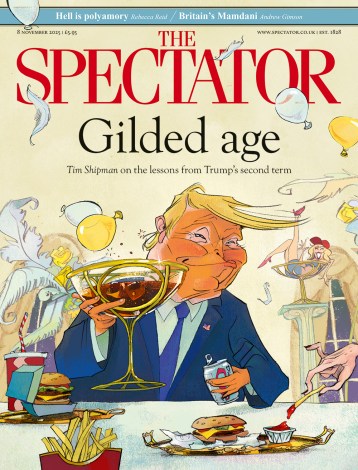I had held Beauty’s sceptre, and had seen men slaves beneath it. I knew the isolation, the penalty of this greatness. Yet I owned it was an empire for which it might be well worth paying.
—Olivia Shakespear, Beauty’s Hour (1896)
All the Rage is a perfect title for a book about terrible beauty. The phrase means what’s fashionable at a particular time; but rage is a violent, sudden anger, stemming from the same Latin word that gives us rabies – mad, passionate, dangerous. Beauty, and its attainment, preservation and curse, are all things Virginia Nicholson chronicles and analyses in this compelling history spanning a century and focusing on its western, female manifestation.
Nicholson, named after her great-aunt Virginia Woolf, is the granddaughter of Vanessa Bell – to my mind, two of the most beautiful and stylish women of the past century. In her introduction, she reminisces about playing at dressing up in the 1950s at Charleston in clothes from the Victorian and Bloomsbury era. This would have made anyone a dedicated follower of fashion, as well as a devotee of the beautiful.
Nicholson is a specialist in women’s history and culture, the author of, among other books, Perfect Wives in Ideal Homes: The Story of Women in the 1950s, and How Was It For You? Women, Sex, Love and Power in the 1960s. She casts her net wider this time, from mid-Victorian days to the start of the ‘contemporary’ – from corsets and infinite buttons to pedal pushers and pop tops.
Amid massive and unprecedented advances for women ‘into the economic, educational, sexual and political strongholds reserved for men’, a woman’s body progressed too – from the mid-19th century when ‘women’s anatomical realities were refashioned from the exterior, via sharp steel and galling whalebone’ to around 1960, when women were ‘able to appear in public places wearing a bare minimum of clothing. It was a convincing transformation from captivity to liberation – or was it?’ The vexed question of liberation is Nicholson’s chief theme:
This book is an attempt to understand and to reconcile the history of the liberation of the female body in light of an incongruity: that, at the very time that women’s economic, educational, sexual and political chains were being unlocked, the shackles of perceived ‘femininity’ were tightening their grip.
Each section of All the Rage is prefaced with the portrait of a woman well known in her day as a ‘professional beauty’ or an avatar for how to look: Alexandra of Denmark, Lillie Langtry, Diana Manners, Freda Dudley Ward, Prunella Stack, Betty Grable and Brigitte Bardot – ‘white, western celebrity influencers, movie stars and icons’ from a period when ‘beauty, privilege and whiteness’ were all predominant in fashion. But women of colour were also beginning to be influential, and Nicholson stresses the input and inspiration of such trendsetters as Josephine Baker, Mamie Garvin Fields and Madam C.J. Walker.
La Crème Ramey, supposed to eliminate fat and wrinkles, had as its active ingredients thorium and radium
The book is packed with stories within stories. Beginning with a photograph of ‘the Jersey Lily’ stretched out on a recamier, figure shaped into a perfect hourglass by her constricting clothing, Nicholson gives us Langtry’s biography as she analyses the studio image. What could working-class women and girls do to emulate Langtry in striving for beauty? How did the rational dress movement push against those corsets and long, heavy dresses with hundreds of buttons?
Belle-Époque women were also interested in exercise and dieting – or ‘banting’ as it was called, after the obese funeral director William Banting, who ‘lost 46lb by giving up sugar, carbohydrates and dairy products’. His Letter on Corpulence (1863), one of the first dieting guides, was a bestseller, and remains in print. It was deemed unfeminine to straddle a bicycle, but women swiftly embraced that means of getting around, and gave up their skirts to ride it, too. Call yourself a cyclist and be damned for your ‘loud-hued leggings’; call yourself a pédaleuse, and acceptance could be easier. Details like this made me smile, and also sigh in sympathy: just use a French word to make something more attractive and ‘feminine’ to a resistant English audience.
Nicholson creates a fascinating kaleidoscope of information that all feels connected, as if the reader were a woman in that time, trying to figure out how to process the possibilities. At the beginning of the period discussed, there seemed a certain strange liberation in strictures:
Self-starvation was rare, and had no medical name. Body hair was left in situ; pedicures were irrelevant, and respectable women didn’t use make-up. It was impossible to make unfavourable body comparisons on the beach when your swimwear – including black stockings – hid everything in sight.
Metal hoopskirts and crinolines worked not just as fashion but a comfort and deterrent: the widespread skirts literally kept men at arm’s length and gave legs room to relax. ‘They could also be artfully arranged to conceal pregnancy.’
With the advent of the ‘new woman’ and a new century, some changes were for the better, others questionable. The Married Women’s Property Act of 1882 had been a tremendous boon. Until then, a woman’s property, unless cleverly entailed, belonged to her husband, as did their children. For a woman to escape a bad marriage with her children was almost impossible. In 1860, there were 103 divorces in England and Wales. By 1928, there were 4,018. Emancipation, of a sort.
Then there were the changes made possible by rampant modernism and its technological and scientific advances: La Crème Ramey, which was supposed to eliminate fat and wrinkles, had as its active ingredients thorium and radium. Horribly unsafe cosmetic treatments included injecting paraffin into the face (which damaged the spectacular looks of Gladys Spencer-Churchill, Duchess of Marlborough). A relief to many women was the shearing of hair into a jawline-skimming, or even earlobe-level, bob. Victorian tresses took hours to arrange properly, and literally weighed women down as they walked. When Virginia Woolf had just completed the first draft of Orlando early in 1927, she and her friend, the poet and playwright Beatrice ‘Bobo’ Mayor, drank too much Spanish wine and Mayor cut off Virginia’s long hair. ‘It’s as short as a partridge’s rump,’ Virginia reported delightedly to Vita Sackville-West – surely the sweetest description ever of a ruffled Jazz Age bob.
Radclyffe Hall; Hattie McDaniel as Mammy in Gone With the Wind; Phyllis Anna Chadwick, the diathermic knife; eugenics; Bardot in her bikini; Pamela Harriman in Dior – they’re all here, from the well-known to the near-forgotten or in many cases newly brought to light and analysed. Nicholson’s research, and her talent for shaping her vast material into a compelling, thoughtful tale, are most impressive. She stops before the explosion of the 1960s. The decades since, however, have not answered the question with which Nicholson leaves us: ‘Will we ever declare a truce on the beauty front line, that danger zone which for so long has kept women from parity and peace of mind?’ Indeed, modern times only seem to vex the question further, and All the Rage gives you some very good ideas as to why this is.







Comments